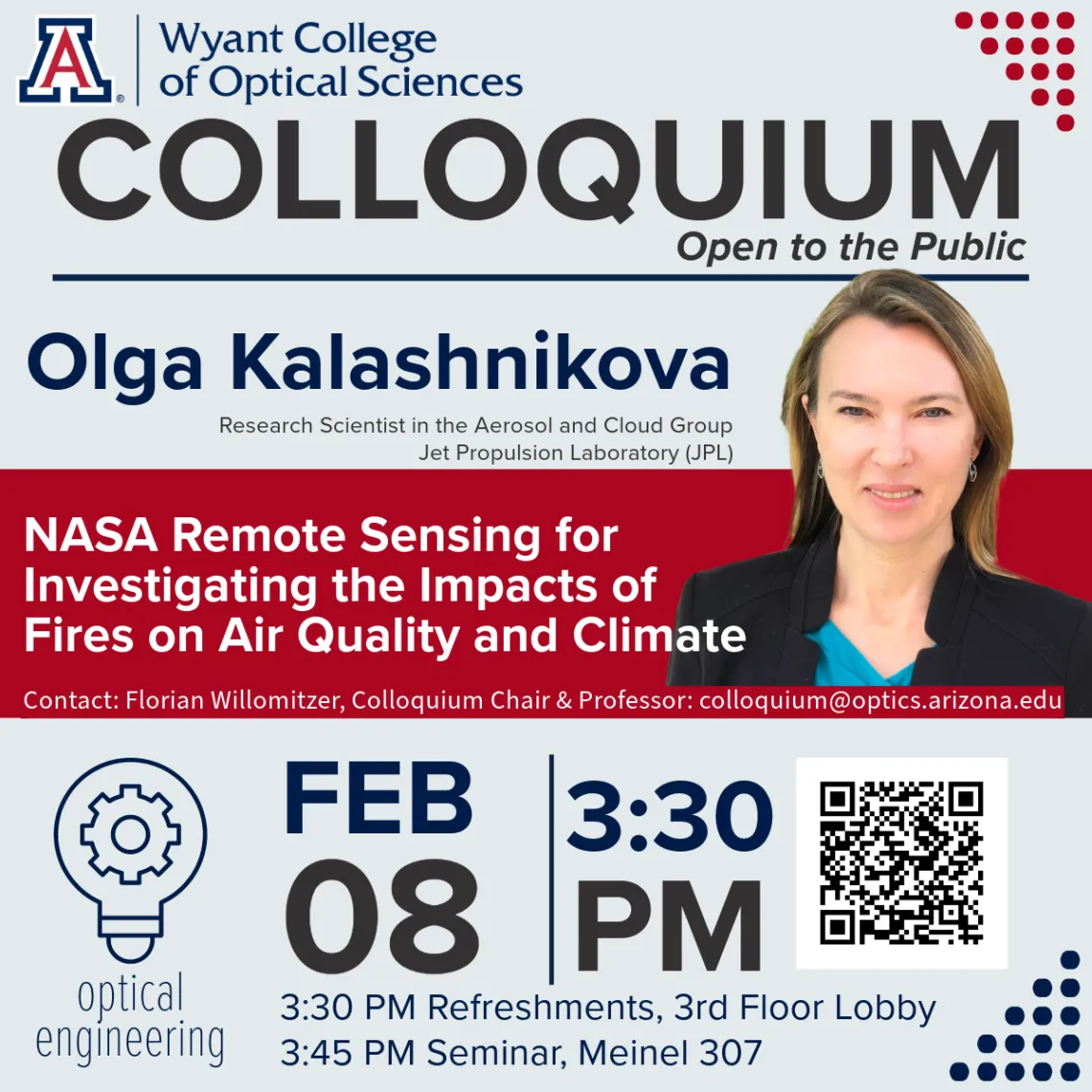
When
Where
Title
NASA Remote Sensing for Investigating the Impacts of Fires on Air Quality and Climate
Abstract
Biomass burning (BB) is a significant air pollution source, and BB emissions are composed of a complex mixture of gases and particles that may directly and indirectly affect both air quality and climate. As the size and frequency of landscape fires and their potential effects on climate and human populations grow, a more comprehensive understanding of the fundamental coupling of weather, fuels, and BB emissions becomes essential. There is a critical need for high-resolution observational constraints from remote sensing measurements on end-to-end fire processes from available fuels and fuel consumption, to emissions and plume development in order to predict the dispersion and downwind effects of BB pollutants.
We will discuss remote sensing observations of fire energetics and smoke properties from NASA satellite and the ER-2 high-altitude research aircraft, and links between in-situ smoke characterization and large-scale satellite observations. Using data from previous NASA field campaigns including SEAC4RS, IMPACT-PM, and FIREX-AQ we will demonstrate how hyperspectral, lidar, and multi-angle, spectropolarimetric remote sensing imagery can be used to constrain fire energetics as well as BB emissions and the particulate composition of smoke.
In addition, we will introduce the newly established NASA Fire Sense program that is focused on delivering unique Earth science and technological capabilities to operational agencies, striving towards measurable improvement in US wildland fire management.
Bio
Dr. Olga Kalashnikova is a Research Scientist in the Aerosol and Cloud group at the Jet Propulsion Laboratory (JPL) in Pasadena, CA. She is a science co-investigator for the Multi-Angle Imager for Aerosols (MAIA), and the Earth surface Mineral dust source InvesTigation (EMIT) NASA Earth Venture Instrument missions. She graduated from the University of Colorado, Boulder with an MS in Physics in 1997, and a PhD in Astrophysical, Planetary and Atmospheric Science (APAS) in 2002. Olga had the role of mission scientist, and the ER-2 aircraft PI during the joint NASA/NOAA FIREX-AQ Field Campaign that took place in the Western United States in the summer of 2019. Currently Olga is a team member of the NASA Fire Sense program.
Can't Join Us In Person?
Register for the Zoom Webinar!
Subscribe to Upcoming Colloquium Announcements
Visit our website for future lecture dates and speaker information
